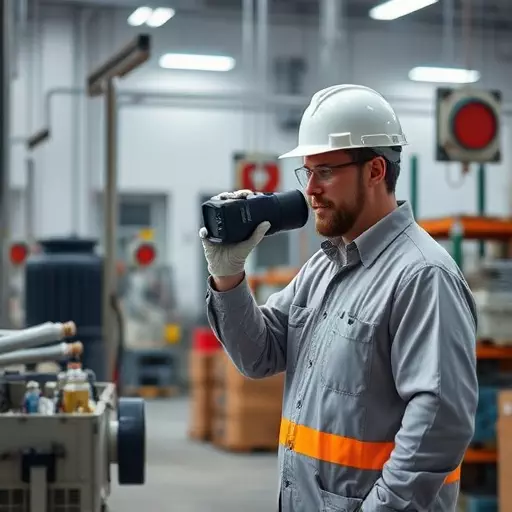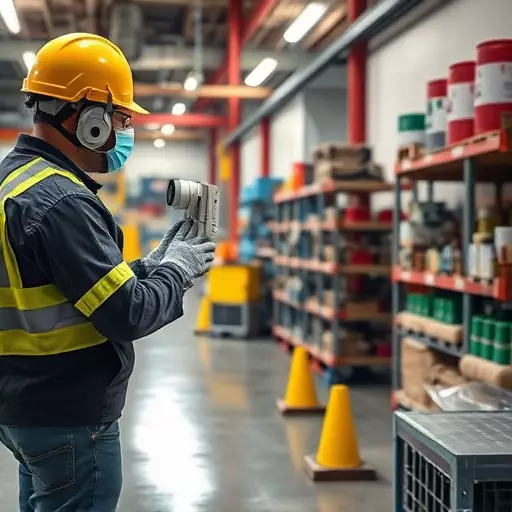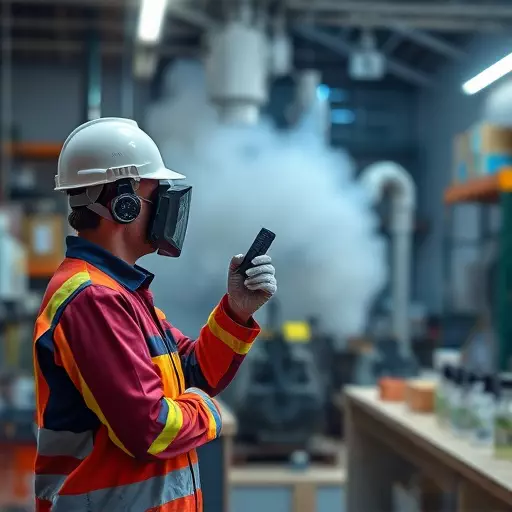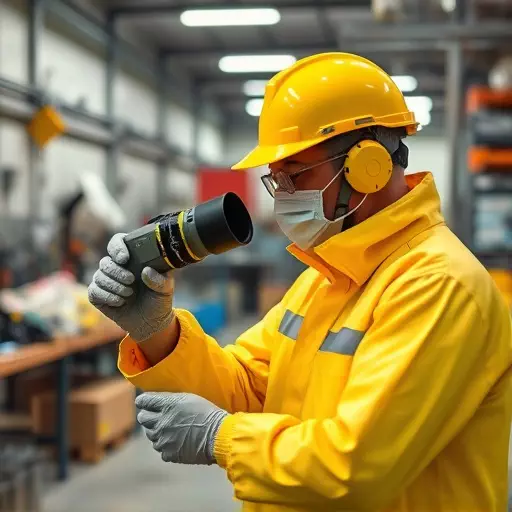The rapid evolution of employee exposure monitoring is driven by increased workplace safety concerns, regulatory pressures, and a desire for healthier work environments. Technological advancements like real-time air quality sensors, wearable devices, and data analytics have transformed workplace air quality testing, enabling proactive risk mitigation based on comprehensive data collection. This shift positions employee exposure monitoring as a strategic initiative, focusing on identifying and mitigating risks associated with hazardous substances to enhance overall workplace safety and productivity. Specialized testing protocols are crucial for industries handling chemicals, metals, or biologics to ensure effective hazardous substance monitoring tailored to their specific environments.
The landscape of employee exposure monitoring is evolving rapidly. In today’s dynamic work environment, understanding and managing risks related to workplace air quality and hazardous substances are paramount. This article explores emerging trends transforming the way we approach these critical aspects of occupational health. From evolving regulations and technological advancements in testing methods to innovative approaches like predictive analytics, we delve into strategies for proactive hazard identification and personalized safety programs. By examining case studies and future predictions, organizations can stay ahead, ensuring safer and healthier work environments.
- The Shifting Landscape of Employee Exposure Monitoring
- – Discussion on evolving regulations and industry standards
- – Impact of recent technological advancements
- Workplace Air Quality Testing: Beyond the Basics
The Shifting Landscape of Employee Exposure Monitoring

The landscape of employee exposure monitoring is evolving rapidly, driven by a growing awareness of workplace safety and health concerns. Traditional methods of hazard identification and control are being supplemented by advanced technologies and data-driven insights. Today, proactive organizations are integrating regular workplace air quality testing into their routines to identify and mitigate risks associated with hazardous substances. This shift is not only fueled by regulatory pressures but also by a desire to create healthier, more productive work environments.
Employee exposure monitoring is no longer a reactive process; it’s become a strategic initiative. By leveraging real-time data from advanced sensors and employing sophisticated analytics, employers can gain a deeper understanding of their workforce’s potential risks. This proactive approach allows for timely interventions and personalized protections, ensuring employees are safe and productive throughout their workdays.
– Discussion on evolving regulations and industry standards

The landscape of workplace safety is continually evolving, driven by advancements in technology and a deeper understanding of health risks associated with various industries. This shift is evident in the growing emphasis on employee exposure monitoring and hazardous substance monitoring. Regulatory bodies worldwide are implementing stricter guidelines and industry standards to ensure better workplace air quality testing and protection for workers.
These developments are prompted by increasing awareness of the long-term health implications of occupational exposure to harmful substances. As such, modern monitoring solutions go beyond simple compliance checks, focusing on comprehensive data collection and advanced analytics to identify potential risks and improve overall workplace safety.
– Impact of recent technological advancements

Recent technological advancements have drastically transformed the landscape of employee exposure monitoring and workplace safety. Innovative solutions like real-time air quality sensors, wearable monitoring devices, and advanced data analytics are revolutionizing how organizations assess and manage potential hazards. These tools enable continuous, precise tracking of airborne contaminants, including hazardous substances, in real-time, providing valuable insights for proactive risk mitigation.
For instance, workplace air quality testing has become more efficient with the integration of IoT (Internet of Things) devices, which automatically collect and transmit data on various environmental parameters. This information empowers employers to make data-driven decisions regarding ventilation systems, personal protective equipment (PPE), and other safety protocols, ensuring a safer working environment for employees.
Workplace Air Quality Testing: Beyond the Basics

Workplace Air Quality Testing has evolved beyond mere basic measurements to become a dynamic field in employee exposure monitoring. It’s no longer just about checking for the presence of common pollutants; modern testing takes into account complex interactions between various hazardous substances and their impact on human health. Advanced technologies like real-time sensors, air sampling equipment, and sophisticated data analytics are now integral parts of comprehensive workplace air quality assessments.
This enhanced approach allows for more precise identification of potential risks specific to an organization’s unique environment. For instance, industries dealing with chemicals, metals, or biologics require specialized testing protocols tailored to monitor their specific hazardous substances. By focusing on these nuanced aspects, organizations can better protect employees from invisible threats, ensuring a safer and healthier workplace environment through effective employee exposure monitoring strategies.
